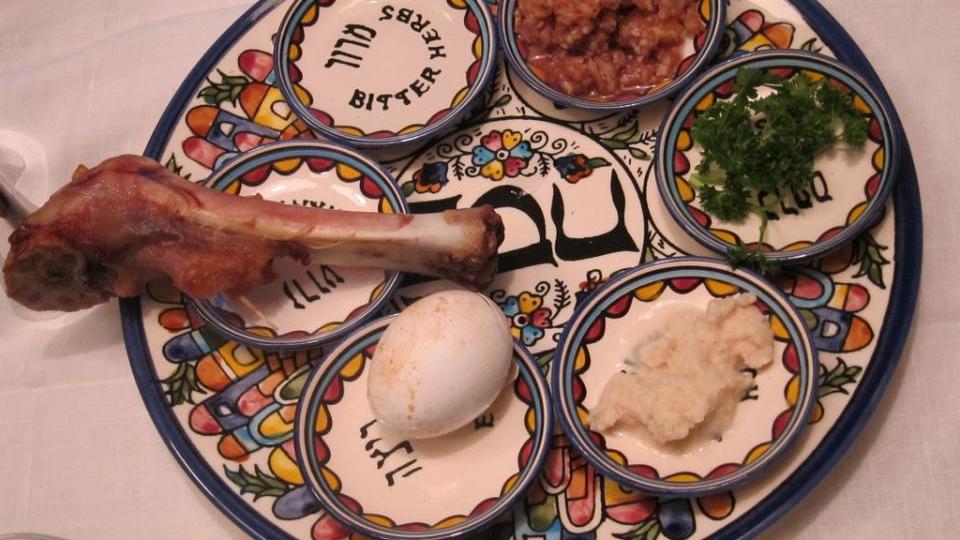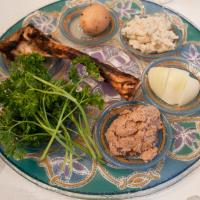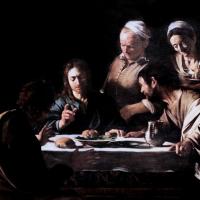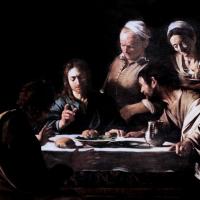Beth Immanuel is a friendly and welcoming community. Click here to learn what to expect when you visit.

A Pass-Ova Mystery
The primary function of the Passover Seder is to tell the story of the exodus to one’s children. The booklet that we read during the seder is called the Haggadah, which means “telling.” As it says, “You shall tell your son on that day, ‘It is because of what the LORD did for me when I came out of Egypt’” (Exodus 13:8).
But if you’ve ever been to a seder, you know that there is much more to it than just telling a story. There are four cups of wine. There is the washing of hands and that apple-nut mush (charoset) and dipping parsley. But even more mysterious than eating what is normally a garnish next to a restaurant breakfast is the object that sits in complete silence. All of the items on the seder plate are either explained or used in some way, except for the egg. Every seder plate has a spot for the egg, but the Haggadah doesn’t tell us why, what it represents, or even what to do with it. It just lays there.
An egg begs to be explained. In the Jewish community, new explanations show up every year, possibly because people either don’t know or are unsatisfied with the ones they have been told.
Does it have something to do with its round shape? Its association with new life? The fact that it gets firm as it’s cooked? To commemorate our freedom from the Egyptian yoke? To remember that the Israelites scrambled out of Egypt? Because Moses said, “Omelette my people go”?
How about this: Does it have something to do with Easter eggs? And I guess that’s a fair question, considering the historical relationship between Passover and Easter. I heard one Messianic rabbi explain (and I’m paraphrasing), “Yes, as a matter of fact they do. The Easter egg is a symbol of Yeshua’s resurrection. The early Jewish Christians were celebrating Passover, and they added the Easter egg to the seder to commemorate this. This custom caught on throughout the Jewish community, even though nobody knew why. To this day, Jewish households worldwide have an Easter egg on their plate marking the resurrection of the Messiah.”
But others are not too happy with the idea. One woman told me, “Easter eggs are pagan fertility symbols poached from Babylon. The Jews borrowed the egg on the seder plate from pagan Babylonian fertility symbols during the exile!” To that I respond: What’s so bad about fertility, anyway? Heck, I love fertility. If it wasn’t for fertility, I would not be alive today!
Nonetheless, there are cracks in both of these explanations. You see, early sources don’t mention eggs on seder plates at all. The closest we come in the Talmud is mention of an egg that is cooked on a piece of fish as a potential Passover dish. That does not sound like the seder plate egg at all. There is actually no evidence that there were eggs on seder plates until at least the eleventh or twelfth century, possibly even later.
What then? Is the custom of a seder egg really that newly hatched? Well, yes and no. Did Yeshua have a symbolic egg at his seder table? Definitely not.
To trace back the actual origins of the egg and find out what truly came first, we must look at the Mishnah, which actually gives us the shell of an outline for the seder dating back to the time shortly after the Temple was destroyed. Here we find the instructions, in some manuscripts, that they are to bring two cooked dishes to the leader of the seder at the time when the lamb would have been brought during Temple times.
In the Jerusalem Talmud, they explain the significance of these two dishes as representing the two sacrifices that would be served at the seder: the Passover lamb and the festival offering—an additional sacrifice that is offered and eaten at every pilgrimage. In Hebrew it is called the chagigah, which is related to the term chag, meaning “holiday.”
In the Babylonian Talmud, it reiterates this explanation and offers some examples of what the minimum requirements for these two dishes could be. One rabbi suggests that a fish with an egg on it would suffice as two dishes. Another rabbi objects, saying that they should both be meat because they commemorate the sacrifices. A third says that even just a bone and its broth would do.
By the sixteenth century, these two dishes had evolved into a lamb shank to represent the Passover sacrifice and an egg to represent the chagigah. Why an egg? For one, it became customary not to eat roast meat on Passover because it was too close to actual Temple practice. But the egg worked out well because it was kind of like meat, but not exactly, meaning that it could be boiled or roasted like a sacrifice and then actually eaten. Besides, a boiled egg is just hard to beat.
Furthermore, eggs are symbolic of mourning in Judaism. The fact that we are not actually eating the sacrifices is sad. Just as we eat an egg prior to the fast of Tisha B’av, the egg of Passover silently tells us that all is not as it should be. While we should be looking at the sunny side and not truly mourn on a festival, the egg does so for us.
So the egg represents the festival offering, the korban chagigah. That’s how we know that Yeshua did not have one at his seder, because he would have had the meat of an actual korban chagigah. May we soon merit to recline with him in the kingdom, and may God make this year’s Passover easy. Nest year in Jerusalem.
More Messianic Passover Teachings
Want more about Passover from a Messianic Jewish perspective? Check out our Passover page!




